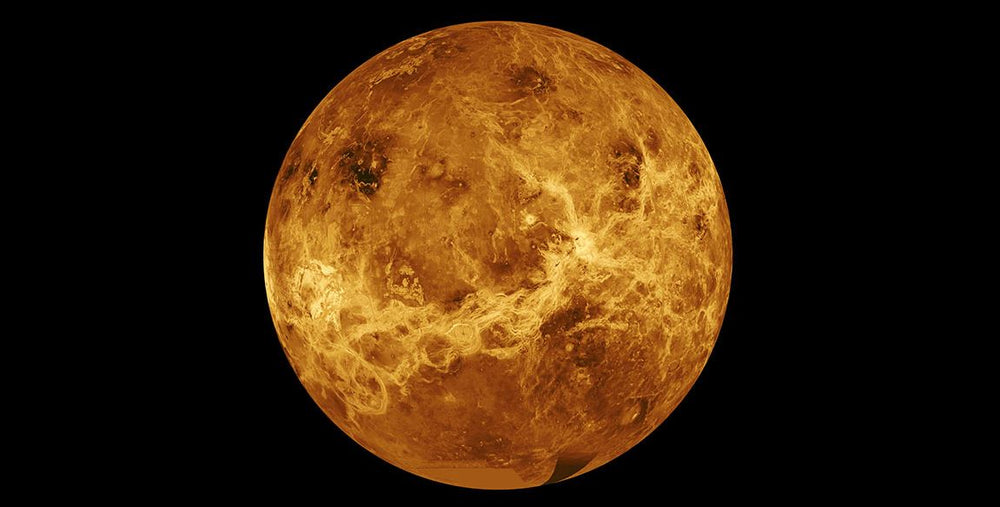How Long Does It Take to Get to Venus
Venus, our neighboring planet, has long captivated scientists and space enthusiasts with its thick atmosphere and extreme temperatures. If you're curious about the time it takes to reach Venus, this article will provide insights into the journey and the factors that influence travel time.
Understanding the Distance to Venus
Before we dive into the specifics, let's grasp the relative proximity of Venus to Earth. Venus is located at an average distance of about 41 million kilometers (25 million miles) from Earth. To put this into perspective, it is approximatoely 0.28 times the average distance between the Earth and the Sun, which is about 149.6 million kilometers (93 million miles).
Traveling to Venus with Current Technologies
Reaching Venus is relatively easier compared to other planets in our solar system due to its proximity. The time it takes to reach Venus depends on various factors, including the launch window, spacecraft speed, trajectory, and the use of gravity assists.
On average, a direct mission to Venus using conventional propulsion systems would take approximately 4 to 6 months. This estimate includes the time required to escape Earth's gravity, perform course corrections, and enter into Venus' orbit.
Historical Missions to Venus
Over the years, several missions have been launched to explore Venus and unravel its mysteries. The Mariner program by NASA successfully conducted several flyby and orbiter missions to Venus, providing valuable insights into the planet's atmosphere, geology, and surface conditions. These missions took several months to reach Venus, depending on the specific trajectory and launch window.
Future Missions and Discoveries
While there are currently no specific missions planned to return to Venus, there is a growing interest in studying this neighboring planet. Proposed missions include orbiters and landers that aim to explore Venus' atmosphere, surface, and potential for past or present life. Future advancements in technology and mission design may enable more ambitious missions to Venus, offering unprecedented insights into the planet's characteristics.
Exploring Venus' Atmosphere and Climate
Venus is known for its dense atmosphere primarily composed of carbon dioxide. Studying its atmosphere, cloud formations, and weather patterns provides valuable insights into the dynamics of planetary atmospheres and the greenhouse effect. Understanding Venus' climate helps scientists gain a broader understanding of atmospheric processes in our solar system.
The Adverse Conditions on Venus
Venus is often referred to as Earth's "evil twin" due to its inhospitable conditions. It experiences extreme surface temperatures exceeding 450 degrees Celsius (850 degrees Fahrenheit) and crushing atmospheric pressure. These harsh conditions make it a challenging environment for human exploration and colonization. Studying Venus' hostile environment contributes to our understanding of planetary geology and the limits of habitability.
Venus: Unveiling the Mysteries of Earth's Twin
Venus, often referred to as Earth's twin due to its similar size and composition, holds a wealth of scientific intrigue. Let's delve deeper into the enigmatic aspects of Venus that make it a planet worth exploring.
Venus' Thick Atmosphere
One of the most striking features of Venus is its thick atmosphere, primarily composed of carbon dioxide. This dense atmosphere creates a runaway greenhouse effect, resulting in extreme temperatures and a pressure nearly 92 times greater than Earth's. Studying Venus' atmosphere provides valuable insights into the processes of climate change, greenhouse gas dynamics, and the potential consequences of unchecked global warming.
Investigating Venus' Volcanic Activity
Venus is known for its extensive volcanic activity. The planet's surface is dotted with volcanoes and vast lava plains, suggesting a geologically active past. Understanding the mechanisms behind Venus' volcanic eruptions contributes to our knowledge of planetary geology, tectonic processes, and the role of volcanism in shaping planetary surfaces.
Exploring Venus' Surface Conditions
Despite its thick atmosphere, Venus' surface conditions are harsh and inhospitable. The extreme temperatures, corrosive atmosphere, and crushing pressure make it a challenging environment for exploration. However, robotic missions have provided glimpses of Venus' rocky landscape, revealing insights into the planet's geological history and surface composition.
Unraveling Venus' Magnetic Field
Venus lacks a global magnetic field like Earth's, which plays a crucial role in shielding our planet from harmful solar radiation. However, Venus does exhibit localized magnetic fields, likely generated by electric currents in its thick atmosphere. Investigating Venus' magnetic field provides valuable data for understanding the dynamics of planetary magnetic fields and their interaction with the solar wind.
Future Missions to Venus
While there haven't been recent dedicated missions to Venus, there is renewed interest in exploring this fascinating planet. Proposed future missions aim to study Venus' atmosphere, surface, and potential geological activity in more detail. These missions could shed light on the mechanisms responsible for Venus' extreme conditions and provide clues about the planet's past and its potential as a habitat for life.
The Implications for Exoplanet Research
Studying Venus has implications beyond our solar system. As we discover and analyze exoplanets, understanding the processes and characteristics of Venus provides valuable comparative data. Venus serves as a cautionary example of the potential consequences of a runaway greenhouse effect and underscores the importance of studying planetary atmospheres in the search for habitable worlds.
Conclusion
In conclusion, the time it takes to reach Venus is relatively short compared to other planets, typically taking around 4 to 6 months with current technologies. Venus' proximity and the growing interest in exploring its atmosphere and surface make it an attractive target for future missions. Each mission deepens our understanding of Venus and its unique characteristics, paving the way for future advancements in planetary science and our understanding of the broader cosmos.

